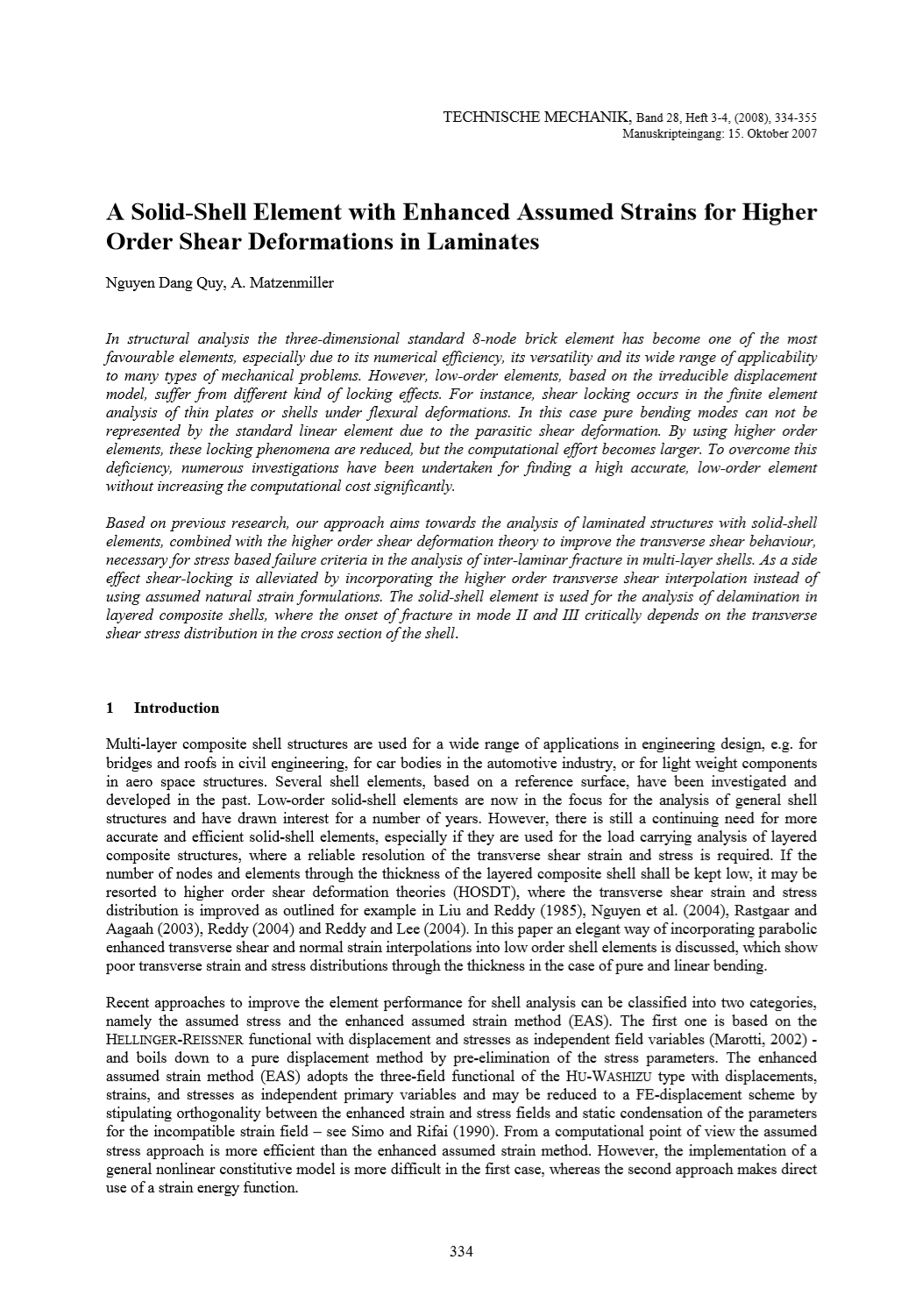A Solid-Shell Element with Enhanced Assumed Strains for Higher Order Shear Deformations in Laminates
Abstract
In structural analysis the three-dimensional standard 8-node brick element has become one of the most favourable elements, especially due to its numerical efficiency, its versatility and its wide range of applicability to many types of mechanical problems. However, low-order elements, based on the irreducible displacement model, suffer from different kind of locking effects. For instance, shear locking occurs in the finite element analysis of thin plates or shells under flexural deformations. In this case pure bending modes can not be represented by the standard linear element due to the parasitic shear deformation. By using higher order elements, these locking phenomena are reduced, but the computational effort becomes larger. To overcome this deficiency, numerous investigations have been undertaken for finding a high accurate, low-order element without increasing the computational cost significantly.
Based on previous research, our approach aims towards the analysis of laminated structures with solid-shell elements, combined with the higher order shear deformation theory to improve the transverse shear behaviour, necessary for stress based failure criteria in the analysis of inter-laminar fracture in multi-layer shells. As a side effect shear-locking is alleviated by incorporating the higher order transverse shear interpolation instead of using assumed natural strain formulations. The solid-shell element is used for the analysis of delamination in layered composite shells, where the onset of fracture in mode II and III critically depends on the transverse shear stress distribution in the cross section of the shell.





